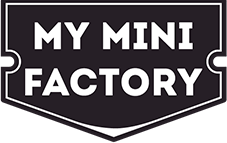Designers and artists have increased concerns since a rogue entrepreneur began reselling designs from Thingiverse, but MyMiniFactory has a partial solution.
The story of the controversy is found here, where I wrote my thoughts on the matter. But in summary, someone decided to co-opt a number of designs on 3D model repository Thingiverse for printing and selling, in spite of legal licensing specified by the designers, which precluded such usage.
While there are legal recourses for designers and artists in these cases, they are often faced with two major challenges:
- Detecting the infringement: It’s a huge digital world, and somewhere in amongst the billions of web pages available might be copies of your design! How can you possibly find the offenders? They may be in faraway jurisdictions and possibly hide their identities as well.
- Removing the infringement: Designers can apply legal pressure to the offenders, once identified. But this costs money and time, and may even require travel to faraway destinations, often making this option moot.
So what is a designer to do? Is there a technical method of preventing this from occurring?
Not really, as the current set of popular file formats and protocols don’t really enable automatic intellectual property protection.
However, MyMiniFactory, one of the leading repositories for printable 3D models, has come up with a partial answer, one that will at least make it less fun for the offenders.
They call it their “Labelling As A Service” approach. Here’s how they describe it will work:
Our users now have the option to stamp their designs with their MyMiniFactory username and shortened link to the object page, meaning that regardless of who 3D prints their creations, their printed objects will be “signed” and attribution will be maintained.
It’s like an automatic watermark that designers can simply select a ticky box to generate. Easy for designers!
But less fun for offenders, as it means each print will include the designer’s information. Their clients may – or may not – take note of this. Progressive buyers might challenge the offender for their purchase of items that were not to be sold. But many may not even notice the watermark.
The offenders could theoretically edit the 3D models to remove the watermark, but that’s an enormous amount of work that may even mess up the original model, so I wouldn’t expect them to undertake that path.
So MyMiniFactory’s solution is definitely not perfect, but it’s a great start that we’d like to see every 3D model repository implement.
Via MyMiniFactory


